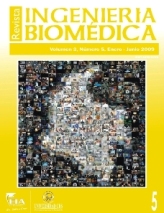MICROFABRICATED NANOCHANNELS: NEW TOOLS FOR MOLECULAR MOTION CONTROL - Micro y nanocanales integrados: nuevas herramientas para control de movimiento molecular
MICROFABRICATED NANOCHANNELS: NEW TOOLS FOR MOLECULAR MOTION CONTROL - Micro y nanocanales integrados: nuevas herramientas para control de movimiento molecular

Mostrar biografía de los autores
This paper presents a review of work on the fabrication and use of nanochannels in silicon and polymers for the control of molecular transport. The method of Sacrificial Layer Lithography is reviewed and demonstrated for silicon and polymers. A novel technique for the productions of conical nanopores through a polymer membrane is also reviewed. Nanochannels and nanopores have many potential applications for drug delivery, immunoprotection of cell implants, blocking of globular proteins from biosensor surfaces, and diagnostic devices. All of these applications benefit from the more direct interactions of devices with biomolecules.
Resumen— El presente trabajo presenta una revisión literaria sobre los métodos de fabricación de nanocanales en silicio y diferentes materiales poliméricos; y su uso en control de transporte molecular. Se describe el método “Sacrificial Layer Lithography” para silicio y polímeros. Adicionalmente, una novedosa técnica para la producción de nanoporos cónicos a través de una membrana polimérica es descrita. Los nanocanales y los nanoporos poseen diversas aplicaciones potenciales en la liberación de drogas, en la inmunoprotección de implantes celulares, el bloqueo de proteínas globulares en la superficie de biosensores, y en dispositivos para diagnóstico. Todas estas aplicaciones se benefician de la interacción directa entre los dispositivos y las biomoléculas.
Visitas del artículo 257 | Visitas PDF 127




